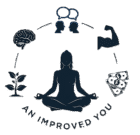Anxiety is a natural, often necessary response to stress. In moderation, it keeps us alert and prepared. However, chronic anxiety can impact our daily well-being, relationships, and productivity. If you find yourself feeling overwhelmed by persistent worry, you’re not alone. According to the Anxiety and Depression Association of America, nearly 20% of adults in the U.S. experience an anxiety disorder each year. The good news? There are practical, science-backed strategies you can incorporate into your routine to ease anxious thoughts and promote calm. In this post, we’ll explore 7 Practical Ways to Reduce Anxiety in Everyday Life, complete with clear, actionable tips you can start using today.
1. Mindful Breathing Exercises
Mindful breathing is an accessible tool you can use anywhere, anytime. By focusing your attention on each inhale and exhale, you can interrupt anxious thought patterns and tap into your body’s natural relaxation response.
How to Practice Mindful Breathing
- Find a Quiet Spot
Choose a calm environment where you won’t be disturbed for 3–5 minutes. - Adopt a Comfortable Position
Sit with your back straight or lie down. Relax your shoulders. - Inhale Slowly Through Your Nose
Count to four as you breathe in, noticing your belly rise. - Hold for a Moment
Pause for a count of two. - Exhale Gently Through Your Mouth
Count to six as you breathe out, feeling tension melt away. - Repeat
Continue for at least five cycles. If your mind wanders, gently bring your focus back to your breath.
“Mindful breathing can reduce cortisol levels and activate the parasympathetic nervous system, helping you feel calm and centered.”
2. Regular Physical Activity
Exercise is one of the most effective natural anxiety relievers. Physical activity releases endorphins—your brain’s feel-good neurotransmitters—and helps burn off stress hormones like cortisol and adrenaline.
Choosing the Right Activity
- Cardio Workouts
Running, cycling, swimming, or brisk walking for 30 minutes most days of the week. - Mind–Body Practices
Yoga, tai chi, or Pilates blend movement with mindful awareness. - Strength Training
Lifting weights or bodyweight exercises can give you a sense of control and accomplishment.
Actionable Tips
- Schedule workouts like appointments in your calendar.
- Start small (10–15 minutes) and gradually increase duration and intensity.
- Pair exercise with something you enjoy—listen to music, podcasts, or workout with a friend.
“Even a short 10-minute walk outside can significantly reduce anxiety levels.”
3. Establishing a Consistent Routine
Uncertainty fuels anxiety. A structured routine provides predictability and a sense of control, reducing the mental load of decision-making throughout the day.
Building Your Daily Routine
- Set Consistent Wake-Up and Bedtimes
Aim for 7–9 hours of sleep and maintain regular sleep–wake cycles, even on weekends. - Create Morning Rituals
Include habits like hydration, light stretching, or a few minutes of reading to start your day calmly. - Time-Block Key Activities
Allocate specific time slots for work, meals, relaxation, and household tasks. - Schedule Breaks
Incorporate short breaks every 60–90 minutes to reset and prevent burnout. - Wind-Down Routine
Use the last 30 minutes before bed for low-stimulation activities—reading, gentle yoga, or listening to calming music.
Why Routines Help
- Reduces decision fatigue by turning healthy choices into habits.
- Signals to your brain when it’s time to focus versus relax.
- Enhances sleep quality, which is crucial for emotional resilience.
4. Limiting Caffeine and Sugar Intake
Too much caffeine and refined sugar can spike adrenaline, jitteriness, and blood sugar crashes—factors that exacerbate anxiety.
Smart Nutrition Swaps
- Decaf or Herbal Tea
Replace one cup of coffee with chamomile, peppermint, or rooibos tea. - Complex Carbohydrates
Choose whole grains (oats, quinoa, brown rice) over processed snacks. - Protein-Rich Snacks
Opt for nuts, Greek yogurt, or hummus with veggies to stabilize blood sugar. - Hydration
Aim for 8–10 glasses of water per day; dehydration can mimic anxiety symptoms.
Action Plan
- Track your daily caffeine and sugar intake for one week.
- Identify high-caffeine time slots (e.g., afternoon coffee habit) and replace them gradually.
- Read labels to uncover hidden sugars in sauces, cereals, and beverages.
“Stabilizing blood sugar through balanced meals can reduce irritability and anxious energy.”
5. Practicing Journaling and Gratitude
Writing down your thoughts helps you process emotions, identify triggers, and gain perspective. Cultivating gratitude shifts your focus from worries to positive aspects of life.
How to Journal for Anxiety Relief
- Daily “Brain Dump”
Spend 5–10 minutes writing nonstop about whatever is on your mind. - Identify Patterns
Review entries weekly to spot recurring stressors or unhelpful thought patterns. - Reframe Negative Thoughts
Challenge anxious predictions with more balanced, realistic statements.
Gratitude Practice
- Three Good Things
Each evening, write three things that went well and “why” they happened. - Gratitude Jar
Drop a note in a jar every time you feel thankful; review them when you need a boost. - Thank-You Notes
Send a message or letter of appreciation to someone who made your day better.
“Journaling and gratitude practices can lower anxiety and increase positive affect by rewiring your brain to focus on the good.”
6. Engaging in Relaxation and Leisure Activities
Relaxation isn’t a luxury—it’s essential for mental health. Leisure activities recharge your mind, reduce stress hormones, and foster joy.
Ideas for Leisure and Relaxation
- Creative Expression
Painting, knitting, playing an instrument, or cooking a new recipe. - Nature Connection
Gardening, hiking, or simply sitting in a park—nature therapy lowers stress. - Mindful Movement
Gentle yoga, stretching, or qigong to release tension and promote body awareness. - Digital Detox
Set tech-free periods to reduce information overload and social media triggers. - Sensory Soothing
Use aromatherapy (lavender, bergamot), soft lighting, or calming music.
Implementing Relaxation
- Schedule at least 15–20 minutes of “me time” daily.
- Rotate activities to keep them engaging.
- Treat relaxation as non-negotiable, like a medical appointment for your mind.
7. Seeking Social Support and Professional Help
Strong social connections are a powerful buffer against anxiety. If self-help strategies aren’t enough, reaching out for support can make all the difference.
Building Your Support Network
- Share with Trusted Friends or Family
Talking through worries often reduces their intensity. - Join Support Groups
Online or in-person groups connect you with people who understand your experiences. - Accountability Partners
Team up with a friend to practice relaxation exercises or maintain healthy routines.
When to Seek Professional Help
- Anxiety interferes with work, relationships, or daily activities.
- You experience panic attacks, sleep disturbances, or persistent worry.
- Self-help strategies provide only temporary relief.
Professional Resources:
- Therapists and Counselors
Cognitive Behavioral Therapy (CBT), Acceptance and Commitment Therapy (ACT), and other modalities effectively treat anxiety disorders. - Psychiatrists
Can evaluate and prescribe medication when appropriate. - Employee Assistance Programs (EAPs)
Many workplaces offer free, confidential counseling services.
“Reaching out isn’t a sign of weakness—it’s a courageous step toward healing.”
Conclusion
Anxiety may feel overwhelming, but you don’t have to face it alone or rely on willpower alone. By incorporating these 7 practical strategies—from mindful breathing and exercise to nutritional tweaks, journaling, relaxation, routine-building, and social support—you can create a comprehensive toolkit for managing everyday stress. Start small: choose one or two techniques, practice them consistently, and observe how your anxiety shifts. Over time, these habits become second nature, empowering you to navigate life’s challenges with greater ease and confidence.
Ready to take the first step? Pick one tip from this post and integrate it into your day today. Notice how it impacts your mood, focus, and overall sense of calm. Remember, reducing anxiety is a journey—every mindful breath, healthy meal, or heart-to-heart conversation brings you closer to a more peaceful, resilient you.



